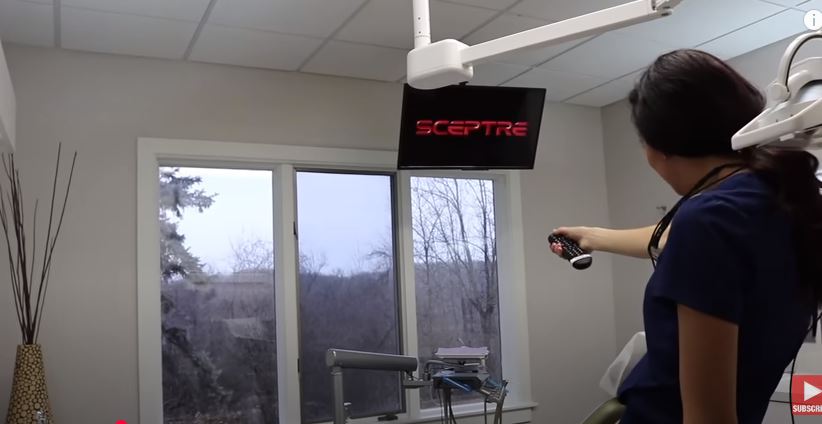At first glance, the role of a dental hygienist might seem simple. But behind every clean tooth and bright smile is a fascinating and complex job that is anything but ordinary. Dental hygienists are a key part of any dental office, and their work goes far beyond just cleaning teeth.
They are not only skilled technicians but also caring educators. Their day revolves around patient care, preventive treatments, and making a real difference in the field of oral health.
A Day in the Life of a Dental Hygienist
A dental hygienist’s day typically starts early, around 7:30 AM, when the office is still quiet, and the workstations are ready. They prepare for the busy day ahead by cleaning tools, checking supplies, and making sure everything is in its place.
Organization and time management are crucial as their day can become hectic, requiring attention to detail and a genuine passion for patient care. The role requires both technical expertise and a warm, patient-focused approach.
Key Moments in a Dental Hygienist’s Day
| Time | Activity | Details |
|---|---|---|
| 7:30 AM | Arrive at the Clinic | Prepare the workstation, sterilize instruments, and check inventory. |
| 8:00 AM | Review Patient Charts | Analyze patient’s medical history and dental records to tailor care. |
| 9:00 AM – 12:00 PM | Patient Appointments | Includes assessments, X-rays, cleanings, fluoride treatments, and educational consultations. |
| 12:00 PM | Lunch Break | Quick rest before the afternoon appointments. |
| 1:00 PM – 4:00 PM | More Patient Care | Conducting more cleanings, addressing patient concerns, and assisting the dentist with procedures. |
| 4:00 PM | Documentation & Chart Updates | Document treatments, update charts, and plan for follow-up visits. |
| 5:00 PM | End of Day Routine | Clean and disinfect tools, review next day’s schedule, and close the practice. |
The Morning Rush: Getting the Day Off to a Good Start
A dental hygienist starts each day by warmly greeting their first patients, creating a comfortable atmosphere before the procedure begins. Just like a teacher preparing for class, the hygienist is calm and professional, setting the mood for the visit. They review the patient’s dental history and identify any potential issues before proceeding with treatment.
The diagnostic phase includes examining the patient’s teeth, gums, and overall oral health, using tools like X-rays to get a clearer picture of the teeth and jawbone. These tools help identify issues that may not be visible with the naked eye, allowing for early detection and treatment of potential problems.
How to Clean: Ensuring a Bright, Healthy Smile
After diagnostics, the hygienist begins the actual cleaning process. This involves using specialized tools, such as a scaler, to remove plaque and tartar buildup. The precision required for this task is immense—hygienists work with great care to ensure the process is both effective and comfortable for the patient.
After cleaning, they use polishing tools to smooth the teeth, often leaving patients with a refreshed feeling, like they’ve just had a spa treatment for their mouth. They may apply fluoride treatments to help strengthen enamel and prevent cavities, especially for patients with a history of tooth decay or sensitivity.

The Last Step: Educating Patients
The most rewarding part of a dental hygienist’s job is teaching patients how to care for their teeth. After cleaning, hygienists educate patients on proper brushing and flossing techniques, empowering them to take control of their oral health at home. This is where the hygienist’s role as an educator shines, tailoring advice for individuals of all ages and making sure that each patient understands the best way to care for their smile.
The Fast-Paced Day Continues
From noon to night, the hygienist’s pace never slows down. With a constant flow of patients, the hygienist moves quickly between appointments, making updates to patient charts, preparing for the next treatment, and ensuring that each patient receives the attention they need.
Working as a Team with Dentists
While dental hygienists often work with patients independently, they are never truly alone. They collaborate closely with dentists, sharing observations and treatment plans. This teamwork is essential in providing the best care for patients, as dentists rely on the hygienist’s findings to help determine the most appropriate treatments.
For instance, if a hygienist identifies early signs of gum disease, the dentist might recommend further treatment, such as scaling or specialized gum care, based on the hygienist’s observations.
Reflecting on the Day
At the end of the day, dental hygienists often take a moment to reflect on the impact of their work. They receive immediate feedback from patients, with many leaving the office with cleaner teeth and a better understanding of how to maintain their oral health.
The daily tasks of cleaning, educating, and caring for patients may seem routine, but they are integral to making a difference in people’s lives, providing healthier and more confident smiles.
The Future of Dental Hygiene: New Roles and Opportunities
The field of dental hygiene is expanding as more people seek preventive dental care. With new technologies, such as AI and digital diagnostics, dental hygienists are enhancing their skills and abilities to provide high-quality care. Some dental hygienists are even taking on more responsibilities, including assisting with orthodontic treatments or working in specialized areas of dentistry.
As the profession continues to evolve, the future looks bright for those entering the field. There are more opportunities than ever for dental hygienists to specialize and grow, making it an exciting and rewarding career choice.
For more on the role of dental hygienists and their impact on oral health, visit AP Dental Practice.
Disclaimer: This article is for informational purposes only and should not be considered as medical advice. Always consult with a qualified dental professional to discuss your specific oral health needs.
